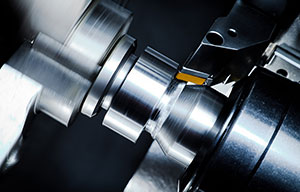How does investment casting work?
Investment casting, also known as lost-wax casting, is a manufacturing process that involves several steps:
1. Pattern Creation: The process begins with the creation of a pattern, which is a replica of the desired part. This pattern can be made from wax, plastic, or another material that can be easily melted or burned away. The pattern is typically created using a mold, CNC machining, or 3D printing.
2. Assembly: Multiple wax patterns, also known as "trees" because they are often attached to a central wax rod resembling a tree trunk, may be assembled onto a gating system to facilitate the flow of molten metal and the removal of gases during casting.
3. Investment (Mold) Making: The assembled wax patterns are then coated with a ceramic slurry. This slurry is made of fine ceramic particles suspended in a liquid binder. After coating, the molds are typically dipped in a refractory material, such as sand or stucco, to build up a thick shell. This process may be repeated multiple times to achieve the desired shell thickness.
4. Drying: Once the ceramic shell is built up, it is allowed to dry thoroughly. This step is crucial to ensure that the mold is strong and capable of withstanding the high temperatures of the casting process.
5. Wax Removal (Dewaxing): After drying, the ceramic molds are heated to melt and remove the wax patterns. This leaves behind a cavity in the shape of the desired part within the ceramic shell.
6. Preheating: The ceramic molds are preheated to a high temperature to ensure that they can withstand the molten metal during casting without cracking or deforming.
7. Casting: Molten metal is poured into the preheated ceramic molds. The metal fills the cavity left by the wax pattern, taking its shape.
8. Cooling and Solidification: The filled molds are allowed to cool and the metal solidifies within the ceramic shell, forming the desired part.
9. Shell Removal: Once the metal has cooled and solidified, the ceramic shell is broken away from the cast metal part. This can be done through various methods, such as vibration, sandblasting, or chemical dissolution.
10. Finishing: The cast metal parts may undergo additional finishing processes, such as grinding, machining, polishing, or heat treatment, to achieve the desired surface finish, dimensions, and mechanical properties.
The investment casting process offers the ability to create intricate and complex parts with high dimensional accuracy and surface finish, making it suitable for a wide range of applications across various industries.


 EN
EN
 jp
jp  ko
ko  fr
fr  de
de  es
es  it
it  pt
pt  tr
tr  ar
ar  iw
iw 



















